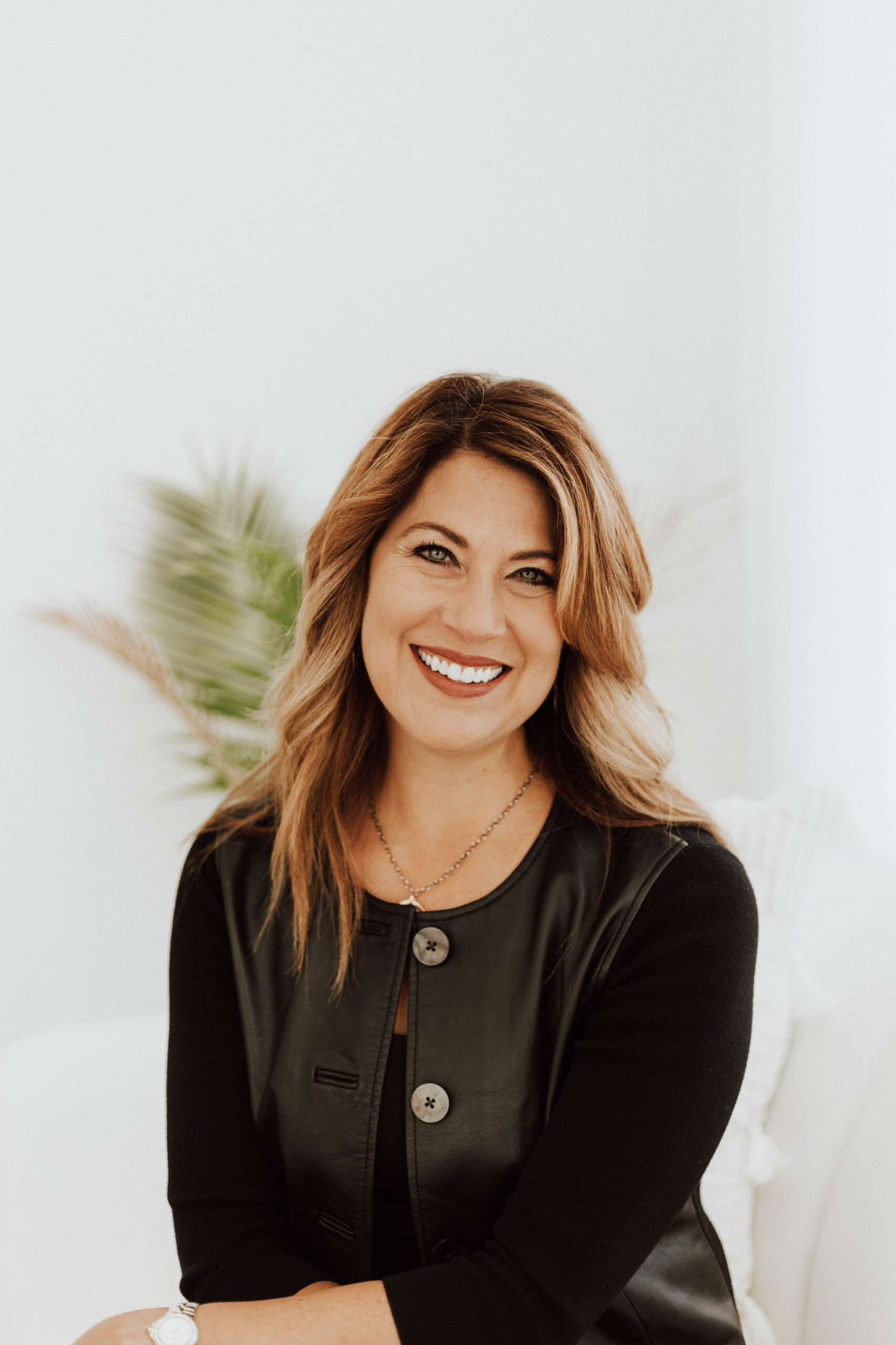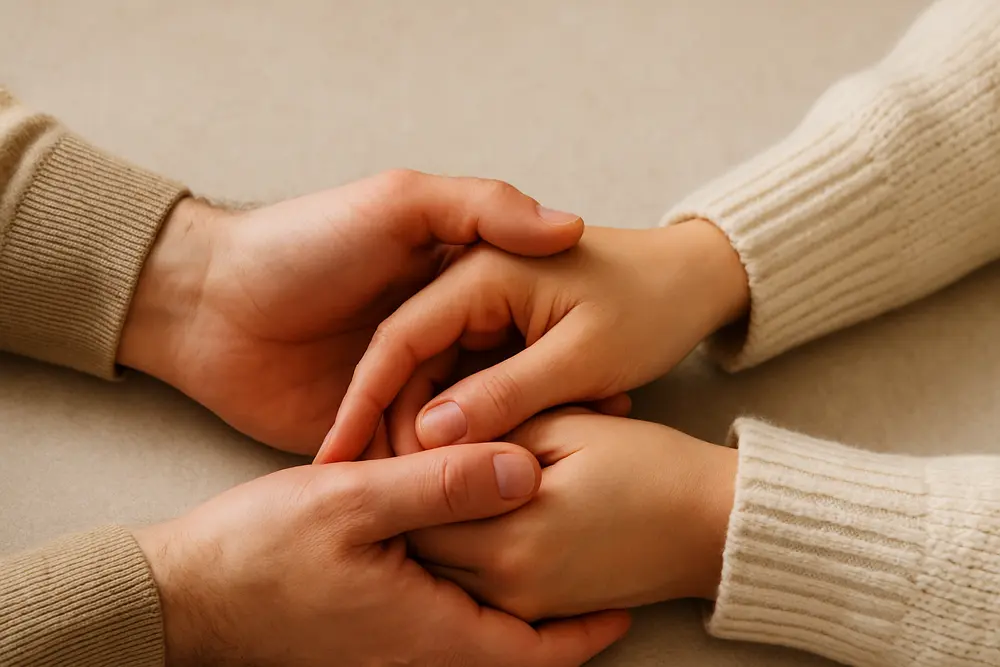Question: “Connection” is a buzz word that gets thrown around. When talking about intimate relationships and working with many couples over the years, how do you define connection, AudrieAna?
Answer: I just love the word connection, even if it is a buzz word! Connection can be a difficult word to define because it means different things to different people. For some, connection means feeling close to someone emotionally, while for others, connection is about feeling close to someone physically, and still others, feeling close mentally (ex. “he just ‘gets’ me”). We can get hung up on focusing on one aspect of these elements of connection, when it is more complex than that. I view connection, like many other aspects of our lives, as a mind-body-spirit experience. I like how author and researcher, Brené Brown defines connection, “I define connection as the energy that exists between people when they feel seen, heard, and valued; when they can give and receive without judgment; and when they derive sustenance and strength from the relationship.” Another way to describe connection is ‘emotional resonance’ or ‘emotional synchrony’ which is based in experiencing empathy. When we feel our partner’s emotional empathy towards us, we feel connected. It signals to us, “I see you. I hear you. You matter to me.”
What is remarkable is that our nervous systems are wired to be connected to others. We pick up a lot of data simply by looking at someone. Our bodies have a way of “knowing” when we feel threatened or when we feel safe. Studies on attachment and bonding have noted which parts of the brain light up during interactions between two partners. For example, fMRI studies show that mirror neurons light up in the brain when we see emotion on our loved one’s face. We then can reflect that emotion back to them. This allows us to read emotional cues and bond with others through emotion. We can tolerate distress better when it is a shared experience with another person. Studies in neuroscience give us valuable information on what occurs in the brain during a connecting conversation or physical touch like handholding. In her book Love Sense, Dr. Sue Johnson shares research using fMRI brain scans that shows that people have a higher pain threshold when holding their partner’s hand. Neurochemicals play a role as well. Oxytocin has been called the “bonding or cuddle hormone.” Oxytocin is released during moments of heightened emotion, physical affection, nursing an infant, or petting a dog, and this neurochemical brings us a sense of calm, joy, comfort, and pleasure. So, you see, science shows us that as we connect with our loved ones (or even our pet!), our mind and bodies are intricately connected in our experience, sometimes in ways in which we are not aware.
Do you see how multi-layered connection can be? I like to help clients put language around what it is like for them to feel connected to their partner and accept the ways they are different and the similar in their connection preferences. Many of us never stop to consider this, much less share it with the significant people in our lives. However, this awareness will have a lasting impact on a couple’s ability to bond even through challenging times.
Question: At times we feel connected to our spouse/partner and then fall out of connection. Sometimes we know why and sometimes we do not. How do you explain this and is it normal?
Answer: When couples come to me for therapy, they are usually surprised to hear that in healthy relationships it is normal to move in and out of connection. This normal ebb and flow differ for each person and each couple. A feeling of disconnection may cause intense distress for one person and be easily tolerated by another. Reasons for the sense of disconnection vary, and the differences between partners are due to things, such as modeling from parents in childhood, attachment styles, previous traumatic experiences, and personality hard-wiring. Each person in a relationship must be willing to look at themselves to try to find the reasons they disconnect from their partner and then do the work to change the pattern of pulling away and, instead, learn to lean into connection in an appropriate manner.
What does disconnecting behavior look like? Here are some disconnection scenarios that range from mild, to moderate, to severe disconnection:
Mild: inattention when your partner is talking, not replying to an important communication in a timely manner, lack of eye contact (turns off the mirror neurons), tone of voice
Moderate: not apologizing when you were in the wrong, condescension, the silent treatment, forgetting a special anniversary, chronic lateness, and withholding affection
Severe: lying, contempt, betrayal, and infidelity
Seasonal scenarios: life transitions like the birth of a child, a move across country, the transition to a new job, a traveling spouse that is routinely in and out of the home, illness of a partner, job loss, financial crisis, and the death of a parent or family member.
Remember, disconnection is normal and to be expected in a relationship. The question is, “Do you know your way back to your partner and do you have the courage and relational skills to reconnect?” When we have experienced unhealthy connections in our past, sometimes it can be difficult to trust even our healthy connections in the present. It can be helpful to have examples of healthy, connecting conversations, particularly during relational distress when sometimes we do not know how to connect without spiraling into old patterns. The book, The Dance of Connection by Harriet Lerner, PhD. helps show the reader how to not fall back into ineffective patterns that lead to disconnection.
Question: What are some common practices or habits found in couples who maintain a healthy connection?
Answer: First off, as mentioned above, I tell couples that it is not alarming to me that they feel disconnected at times or during a season. What is more concerning to me is whether they know their way back to connectedness. Do they know what contributed to the disconnection and how to initiate reconnection? This relational move requires a certain level of self-awareness, self-esteem, healthy boundaries, empathy, humility, and courage. The following are questions to ask yourself (not your partner):
Do I have the courage to initiate a connecting conversation?
Do I have the self-esteem and self-confidence to own and share my reality and emotions?
Do I have the strength to handle how my partner responds to my sharing?
Make time and space for connecting conversations and activities. Remember, we process emotions better with another person and are able to bond over this sharing and receiving when done in an empathic way. Make sure your connecting conversations feel emotionally safe. If defensiveness, blaming, judgement, and deflection are a part of your conversation, you will take steps backwards instead of forwards. The following are ingredients in a connecting conversation: a calm presence, eye contact, listening to understand (not to correct), empathy, use of “I” instead of “you” statements, and accepting your partner’s reality or perception (even if it differs from your own). This posture takes practice and couples that have connecting conversations regularly increase their confidence to venture into them.
Question: For most couples, what is considered realistic and healthy when it comes to connection? You do not want to be two ships passing in the night and, yet, you can’t always be connected, right?
Answer: Correct! This is where a person’s attachment style comes into play. There are three types of attachment styles: anxious attachment, avoidant attachment, and secure attachment. In anxious attachment, adults are often afraid of being alone, they have a powerful desire for intimacy combined with doubts and fears of abandonment. Often, due to their fears that their partner will not love them back, they routinely monitor their partner for cues that signal detachment. Those that have an avoidant attachment style can feel uncomfortable with closeness and see closeness as a threat. They can be very independent, push others away and have difficulty trusting and opening up. Those that have a secure attachment style feel comfortable with trust and intimacy. They are described as warm, loving and confident with self-esteem. They value interdependence over independence or autonomy in their long-term relationships. Identifying your default attachment style will help you and your partner understand your relational moves and know what to do to foster the secure attachment that so many of us desire. Do you want to know you or your partner’s attachment style? You can take a brief quiz in the informative book, Attached: The New Science of Adult Attachment and How it Can Help You Find-and Keep Love by Amir Levine M.D. and Rachel S.F. Heller M.A.
Question: What is your favorite way to help couples rekindle their connection?
Answer: I work to cultivate and build attunement and secure attachment with couples. I briefly described attachment styles above. Attunement is simply, “tuning in,” being aware, noticing small moves you or your partner make, particularly when in distress. This is what a watchful parent does for their child. They look for cues to know their child’s state of mind and then they respond appropriately. No response can be damaging to the child and too big a response can overwhelm the child’s nervous system. The same is true in adult-to-adult loving relationships. Those who can attune to their partner will gain valuable information on what needs to happen when there is a disconnection. Those who can attune to themselves, and their own emotions and needs can communicate effectively to their partner. This allows them to be known, supported and soothed. And those couples where both can attune to the patterns of their relational dynamics (or the dance) between them are more easily able to assess and restore the connection. Sometimes couples cannot do this on their own, especially if these relational dynamics were not modeled for them by their own parents. This is an opportunity to seek the help of a trained and experienced couples’ therapist. The therapist will help the couple awaken to the three things contributing to the connection: me, you, and us. I encourage all couples to make space, make time, and make their relationship a priority. If needed, make an investment in the relationship through book study, podcasts, and/or therapy. The following are the books referenced in this article and they can be used to strengthen your connection.
Article Resources & Suggested Books:
Love Sense by Dr. Sue Johnson
Attached: The New Science of Adult Attachment and How it Can Help You Find-and Keep Love by Amir Levine M.D. and Rachel S.F. Heller M.A.
The Dance of Connection by Harriet Lerner, PhD.
Written by AudrieAna Gardner, MSW, LISW-S


